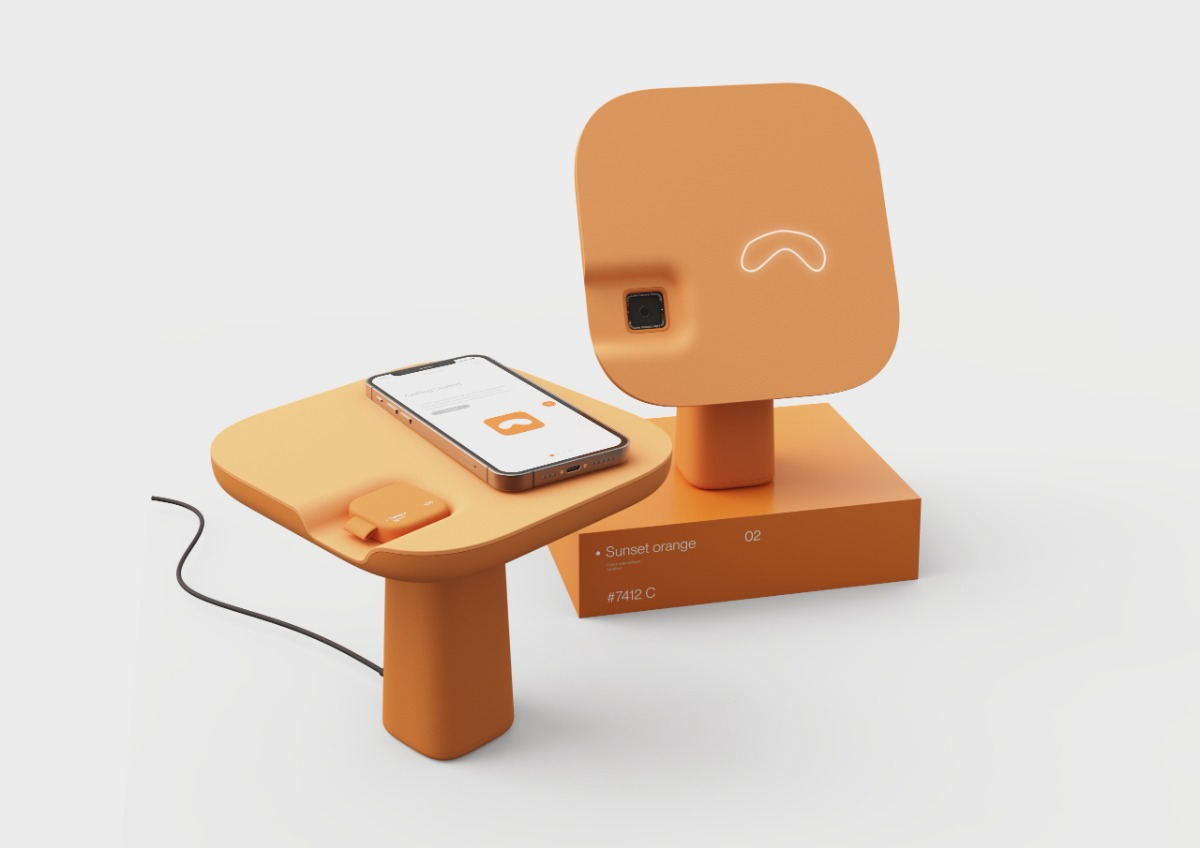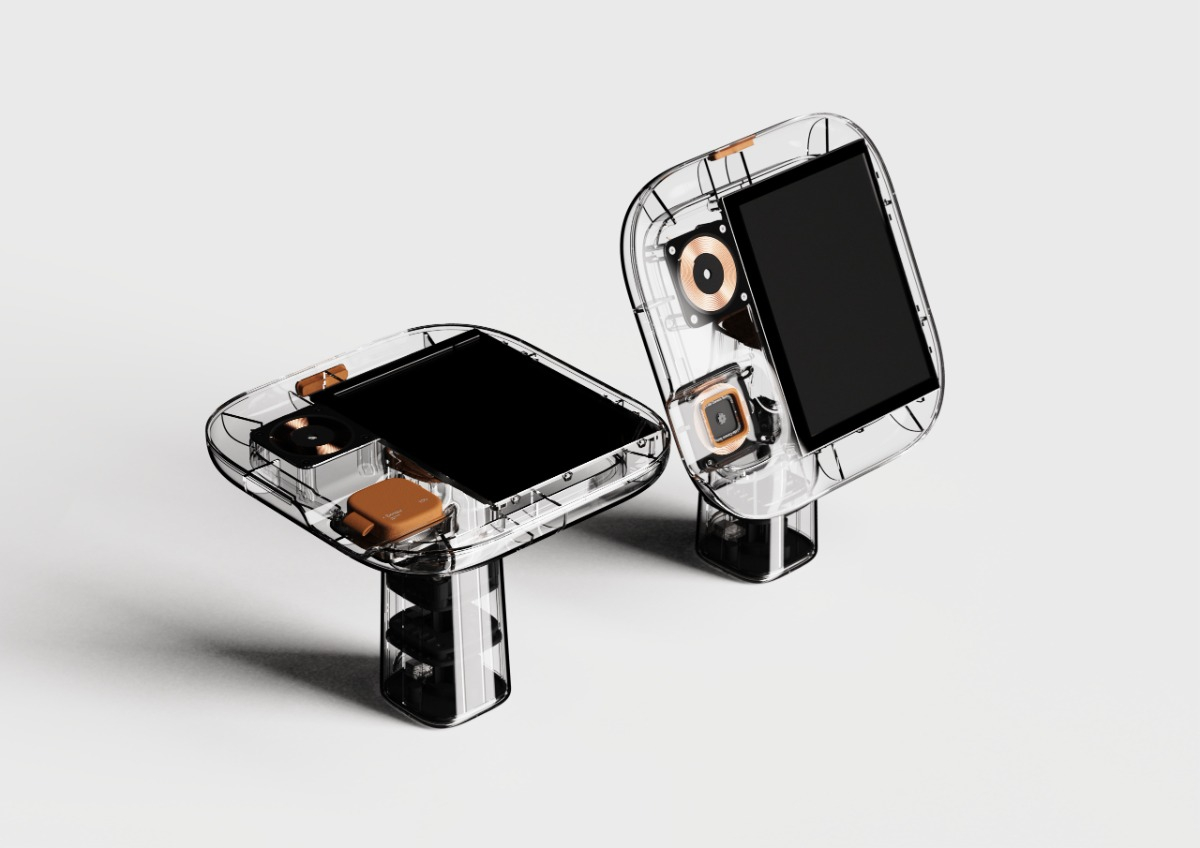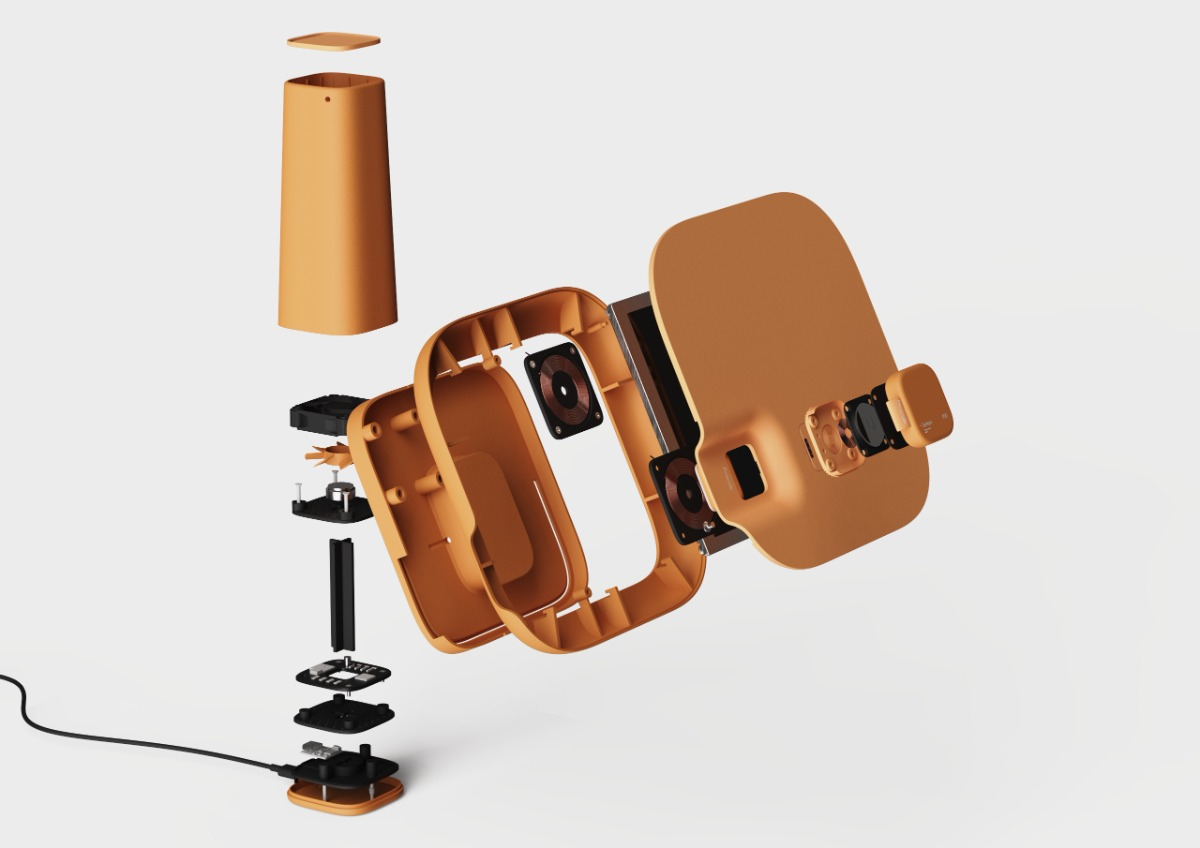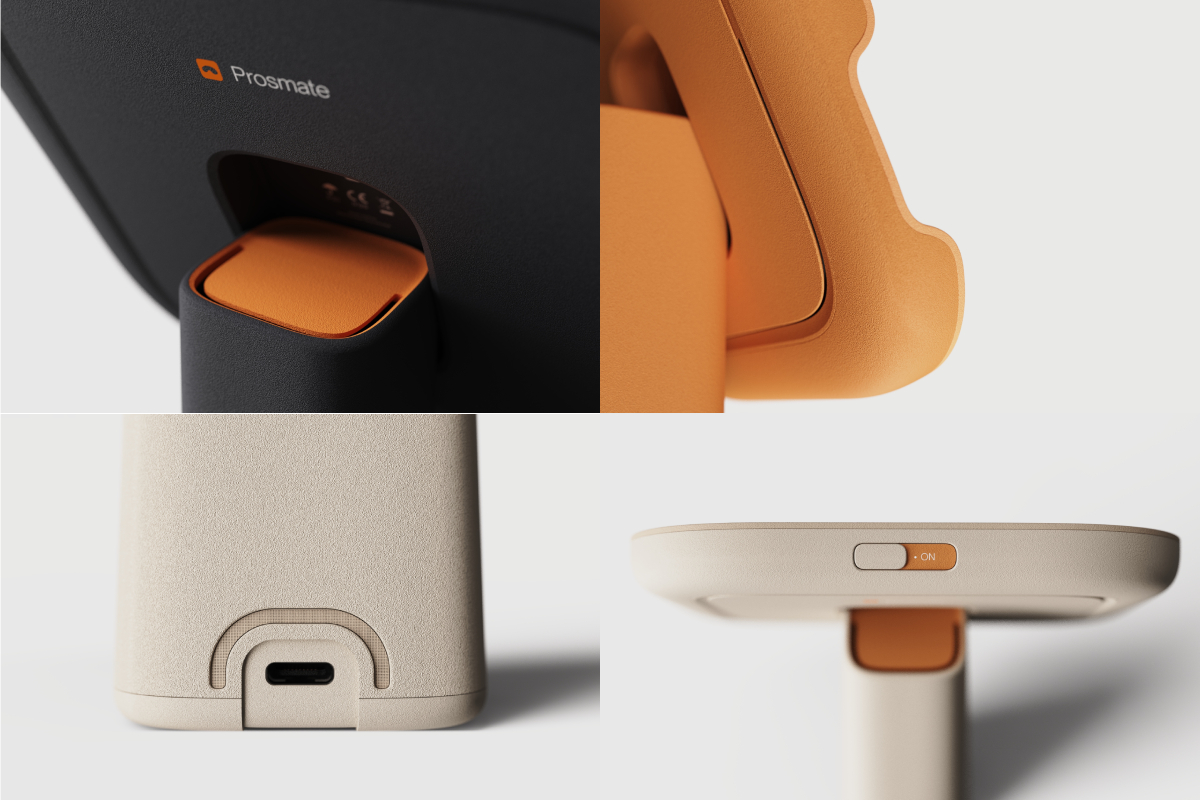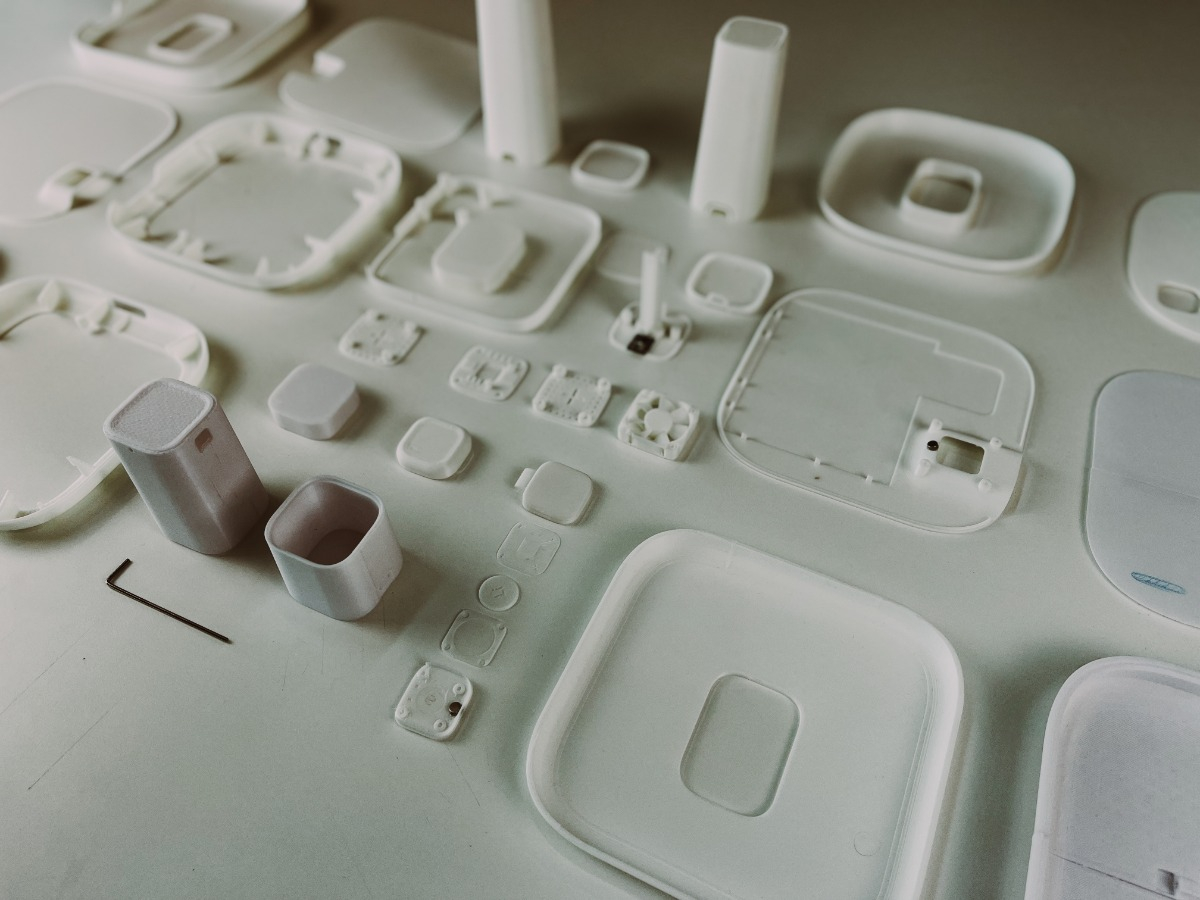A purpose driven designer looking to better user experiences whilst balancing feasibility and considered aesthetics.
Final year project
Prosmate
Prosmate - Improving Radical Prostatectomy Recovery Windows
Prosmate is designed to challenge the stigma associated with prostate cancer.
It acts as a wireless charger for the users devices as well as the surface electromyography (sEMG) sensor, to better integrate the device into the users routine and improve patient adherence to Pelvic Floor Muscle exercises (PFME).
Prosmate, provides users with a real time visual representation of their pelvic floor. Utilising a EMG sensor, a Lidar time of flight proximity Sensor and a pre-existing MRI scan of the patients pelvic floor. The real time data collected from the EMG sensor is fed to the home device where it is processed in a pre trained AI algorithm on a arm M4 microcontroller. This data is then fed back to the user through the use of an animated digital twin, which raises up and down as users perform Kegal exercises. This allows users to visually see their pelvic floor move for the first time, so they can adjust and improve their form to maximise the effectiveness of PFME and reduce their recovery window from post surgery stress incontinence and erectile dysfunction.
The companion for the home.
Challenging the Stigma, unlike current solutions Prosmate is a non invasive way for users to monitor their pelvic floor, utilising surface electromyograph instead of the anal probes currently offered to patients. Prosmate's modern, soft and empathetic aesthetic allows users to simply rotate the device back after use, removing the need to clean down and hide the device which is what users currently have to do with current invasive incontinence devices. The removal of such invasive probes & cables streamlines the device set up and interaction in an effort to improve patient uptake and adherence to PFME. The Lens also doubles as camera lens cover for the Lidar camera providing users with privacy within their home, so the device isn't always watching when not in use.
Scenario Of Use
The interaction of prosmate has been developed so it blends into users routine seamlessly.
1) Users place their personal devices on the stand to charge at night.
2) Users then remove their devices first thing in the morning
3) At the same time users remove the EMG sensor from the device home
4) They then pivot the device towards themselves until it is at a comfortable angle.
5) Users place the Sensor on the abdomen or the lower back, using the adhesive pad.
6) Users then see the display come to life which guides them through their quick morning Pelvic floor exercise, providing them with both visual and haptic feedback so they can adjust their form and maximise the effectiveness of PFME.
General Assembly
The tower stack contains mains Usb-c at the bottom of the stack as well as a counter weight. The middle of the stack houses a M4 arm cortex microcontroller, responsible for the processing of the mixed signal data gathered from the EMG sensor. The Tower stack also houses a cooling fan above the microcontroller drawing the hot air out of the tower stack out through the cooling vent at the top of the tower.
The top dish sub assembly comprises of the outer ABS casing which comes apart in 3 pieces to facilitate product assembly. Internally the top dish houses a shine through display on a locally thinned surface of the top face. It also houses two QI wireless charges one for the users devices and one for the EMG sensor. The second QI wireless charger is also integrated into a subassembly which enables the Lidar Camera to look through the centre of the Qi coil, to maximise proximity to the charging coils. The Top dish also has an easily accessible but hidden switch on the back so users can turn the device off when not in use.
The Emg Sensor contains a lithium iron battery mounted onto a pcb alongside a low power Bluetooth chip that feeds the data from the sEMG dry electrode on the bottom of the sensor back to the tower stack for processing.
Exploded view
Close Read Details
Visualisations of the devices interaction points, with the top left image showing the extraction vent out of the tower stack, this facilitates the removal of hot air from the internal tower stack that houses the Arm m4 controller that undertakes the data processing necessary to create the digital twin.
The Top right image shows the vent on the rear of the display allowing for cooling of the shine through display, Wireless charging and Lidar sub assemblies.
The bottom left image shows the air intake vent at the bottom of the tower stack for cooling the processor alongside the USB-C port.
The bottom right image shows the on off button to enable users to power down the device when away for extended periods of time or when not in use.
Iterative Prototyping
Iterative prototyping was used throughout the development to craft the device form. Utilised to test and evaluate the impact of design changes on the devices user interaction, the empathetic form factor and the housing for the internal architecture required to deliver the function.
Colour way variants
As prostate cancer effect 1 in 8 men the potential market for Prosmate is vast and needs to facilitate the needs and tastes of many user groups.
The dark Charcoal CMF is the Blokes Blokes product, the classic matt black colour way is designed for those who want a product that's quite masculine in appearance.
The Sunset Orange colour way is a bolder more brash colour way for those who are more outgoing and want to challenge the stigma associated with prostate cancer.
Finally the Champagne/Tan colour way has been designed for those who are more reserved in approach and want a homely subtle product that blends seamlessly into the home environment.
Callum Beal
Final year project
Prosmate
Work Experience
I spent a year at Cambridge Consultants within the Medtech team designing and developing healthcare devices.
